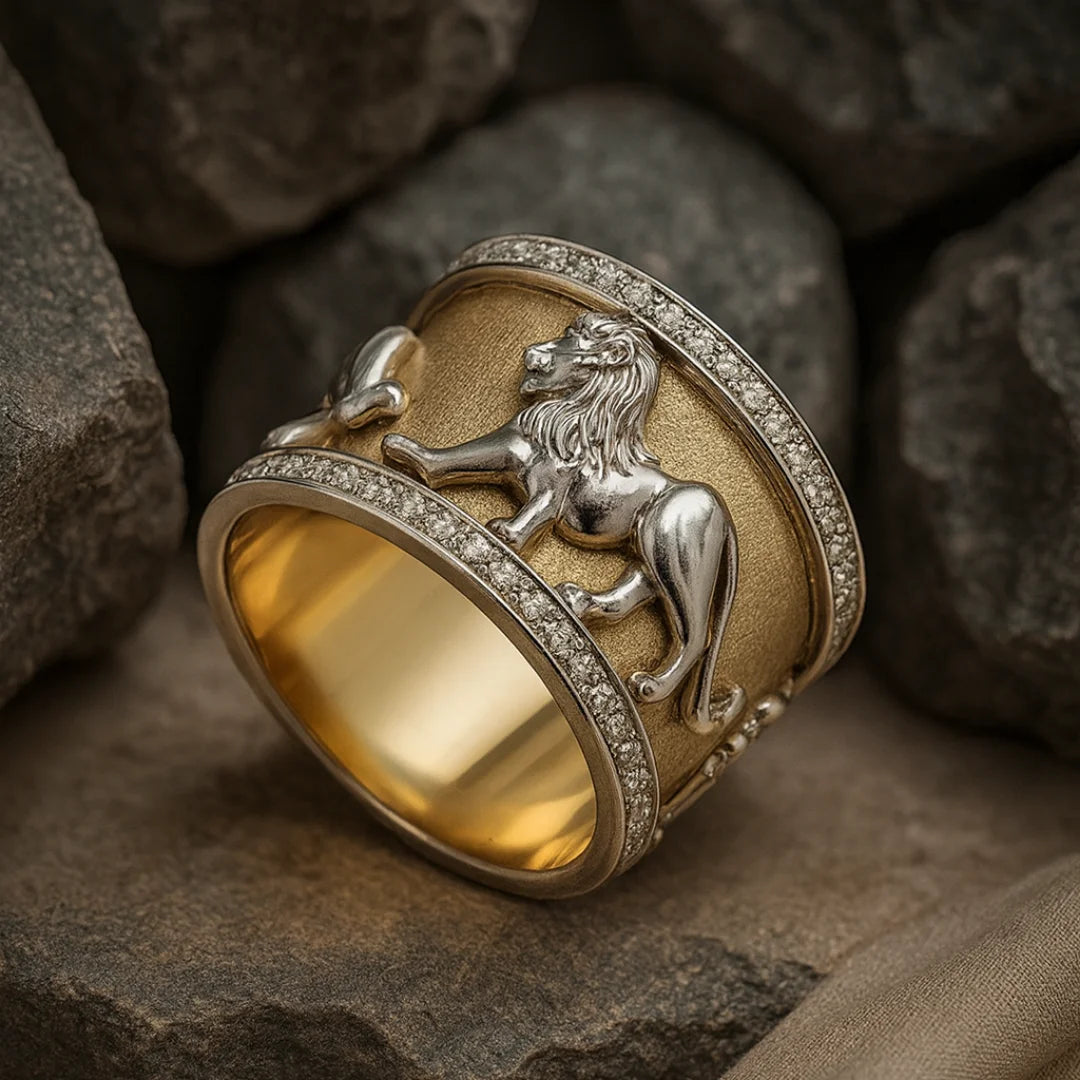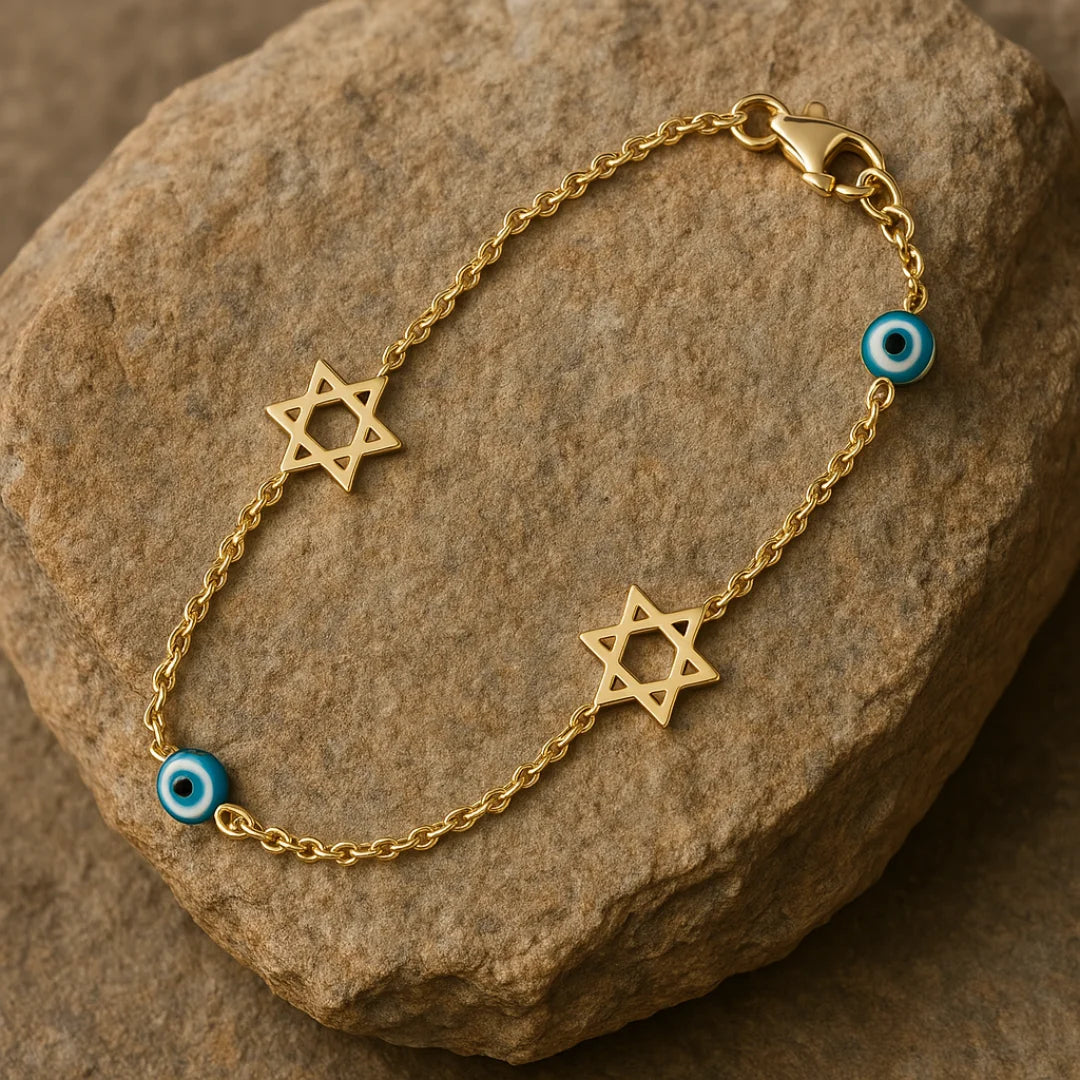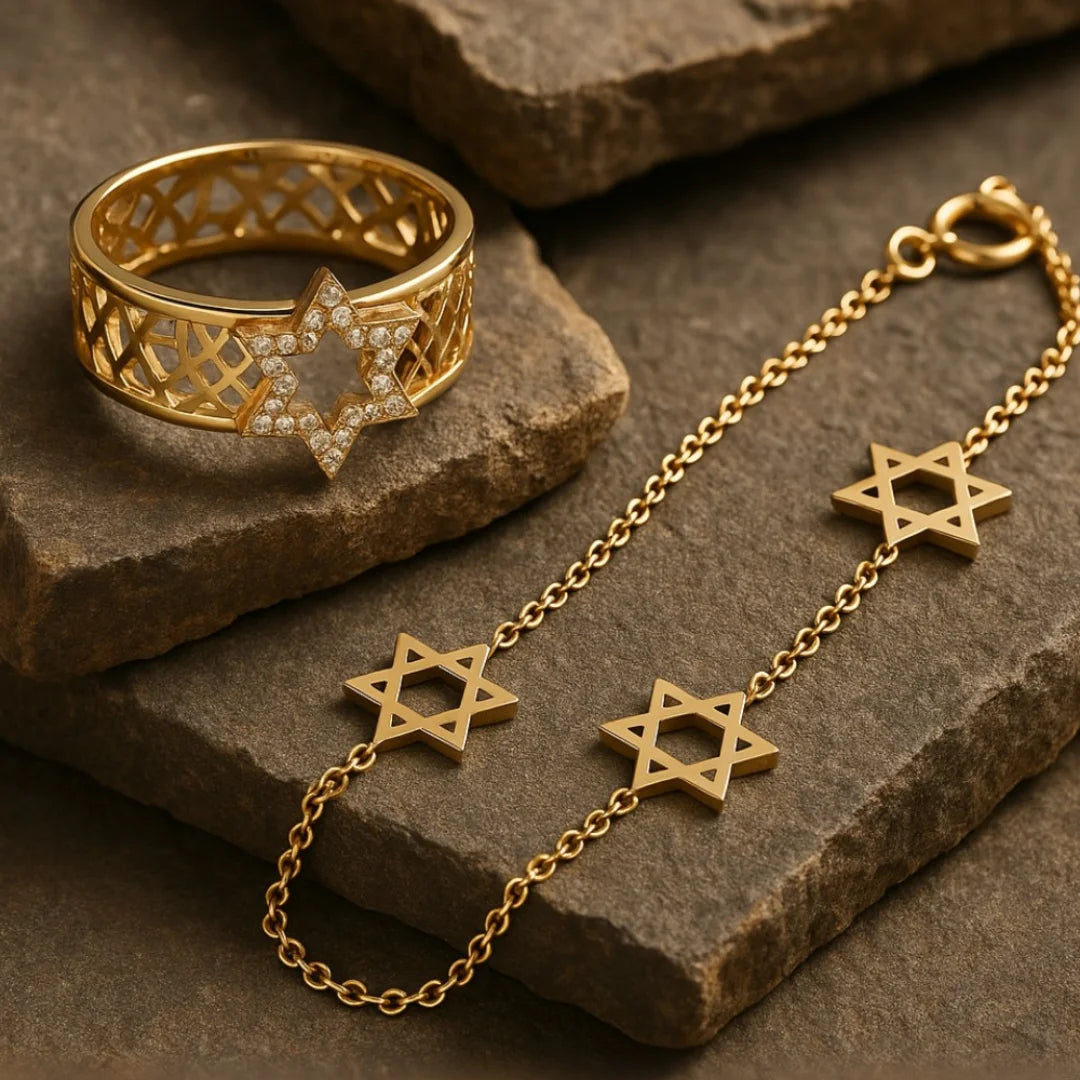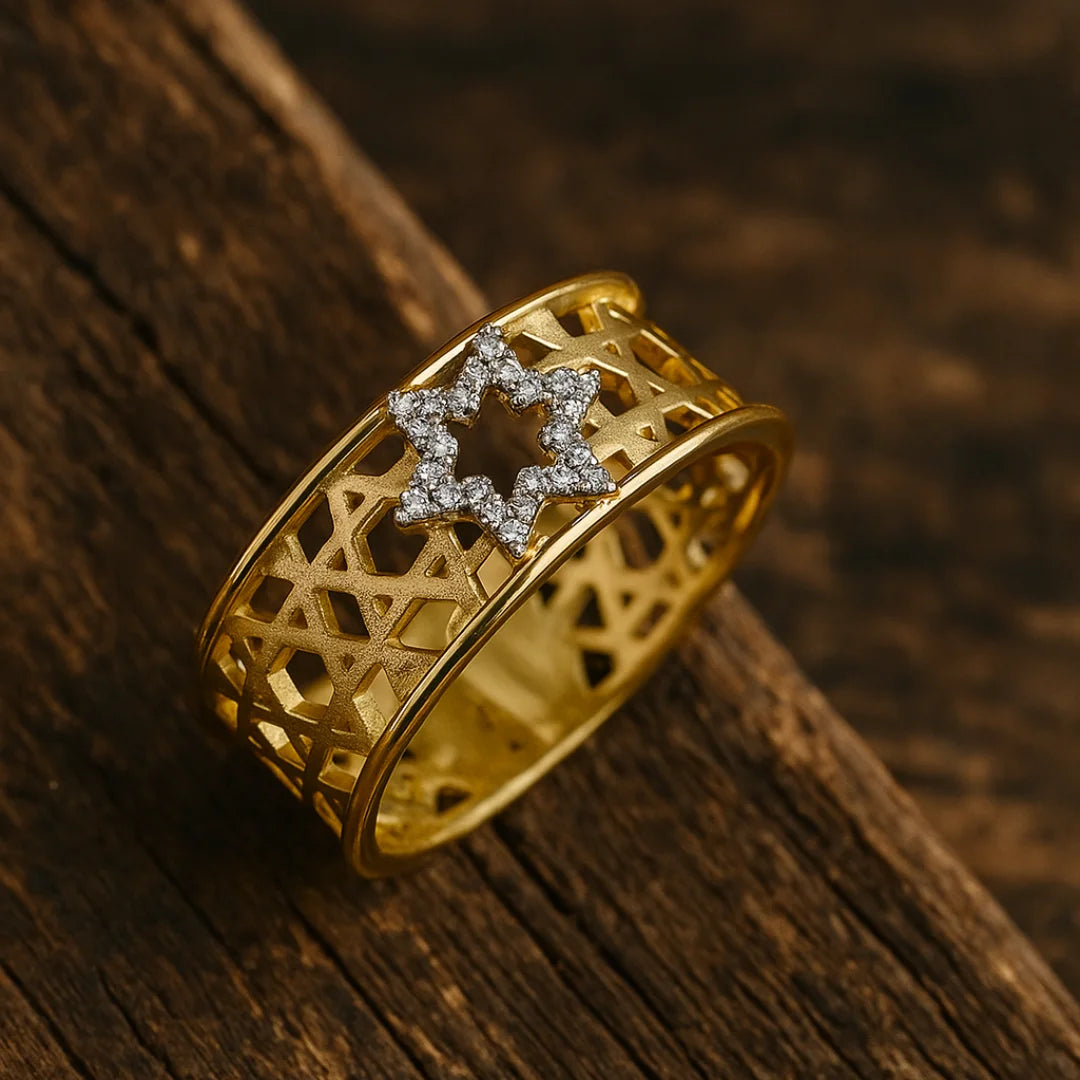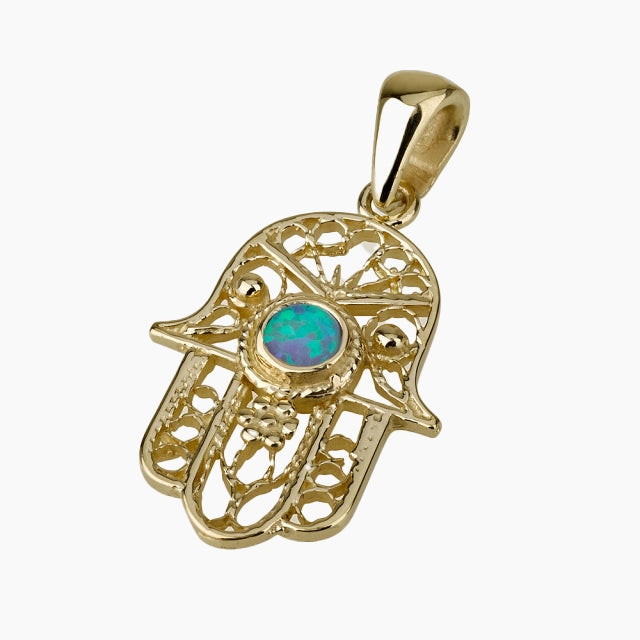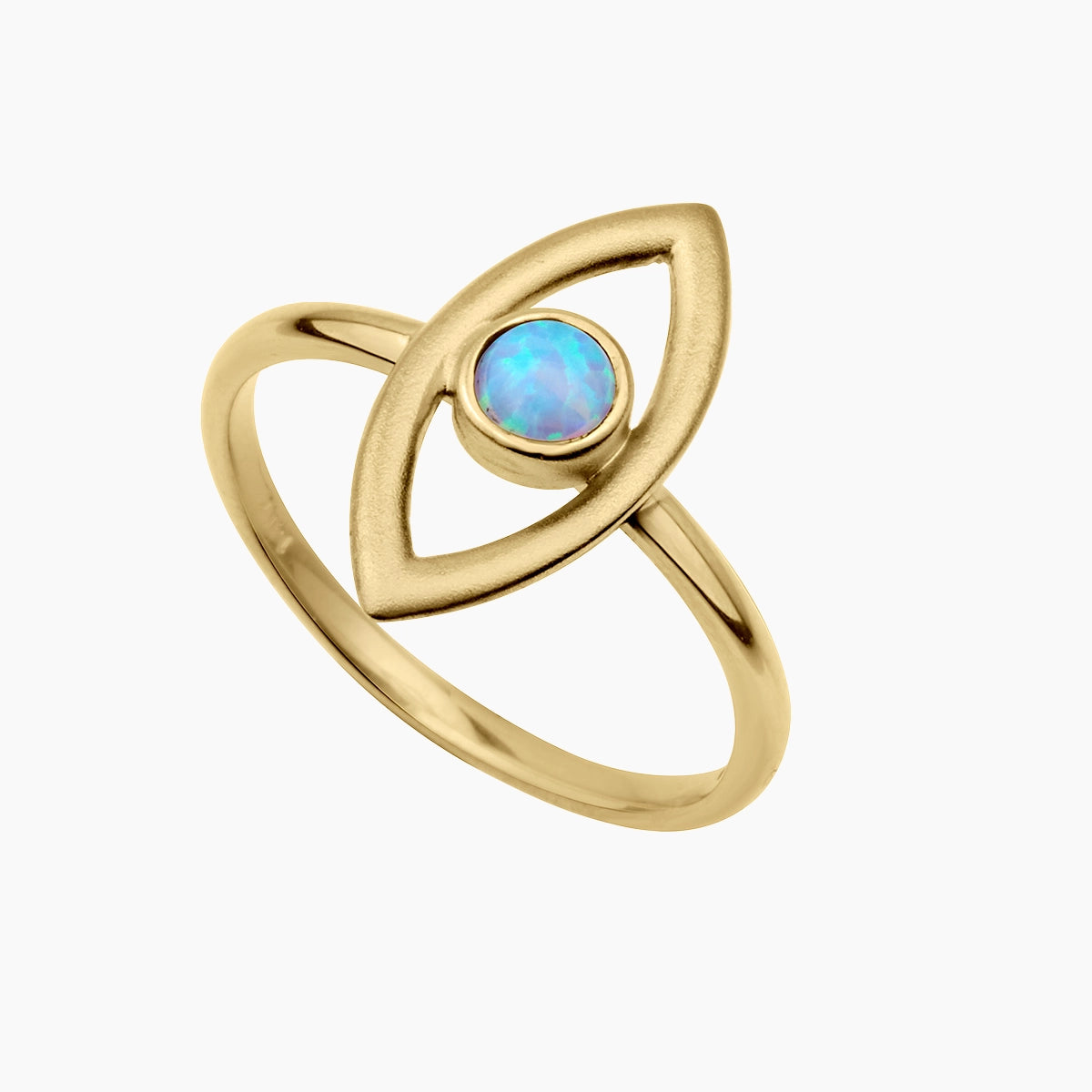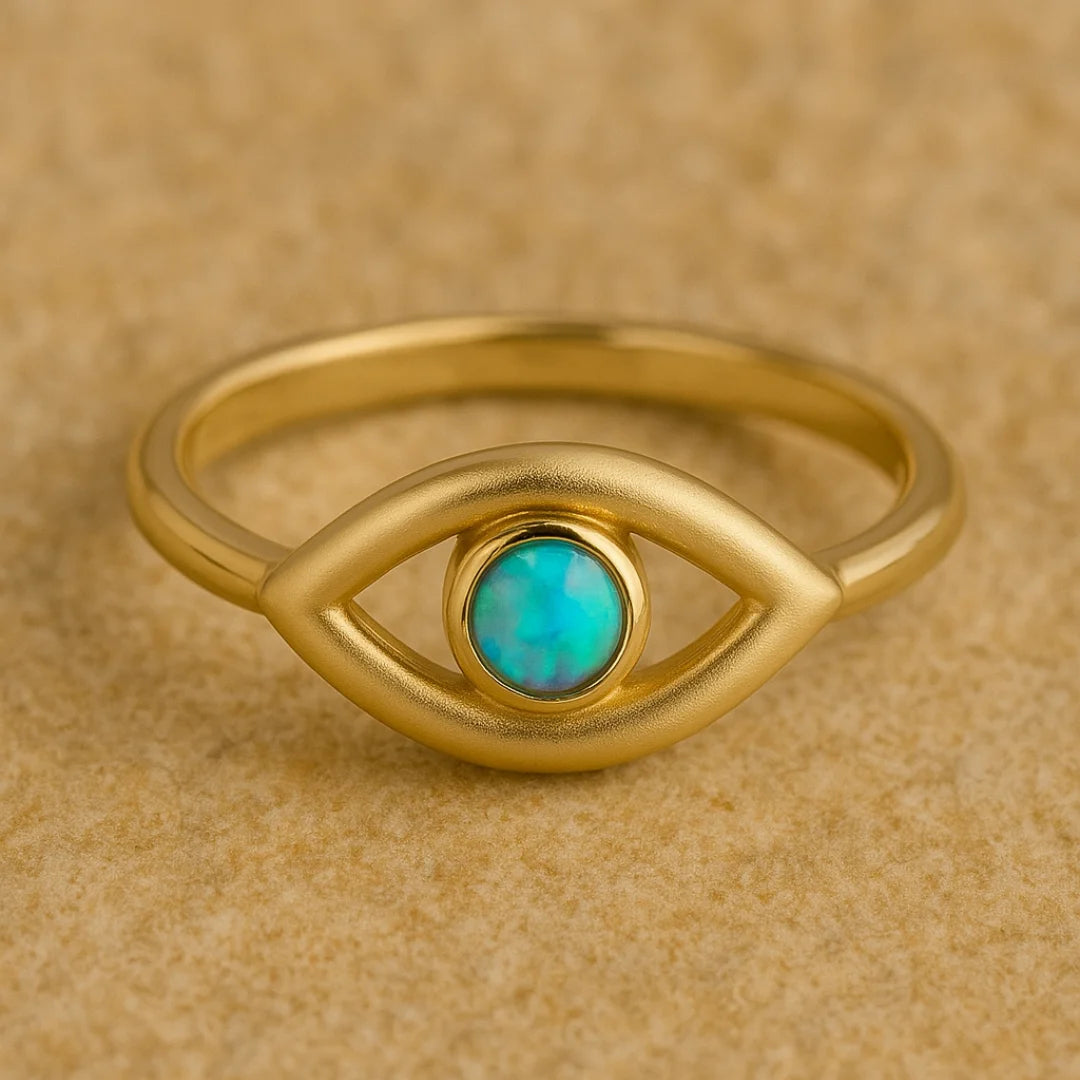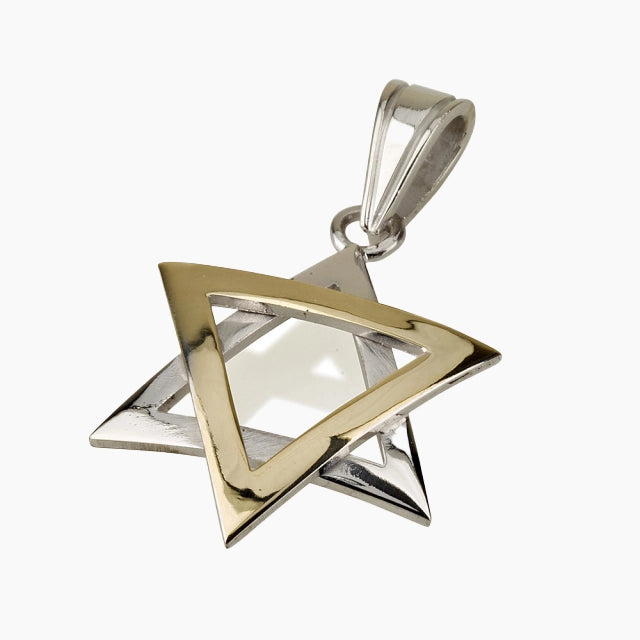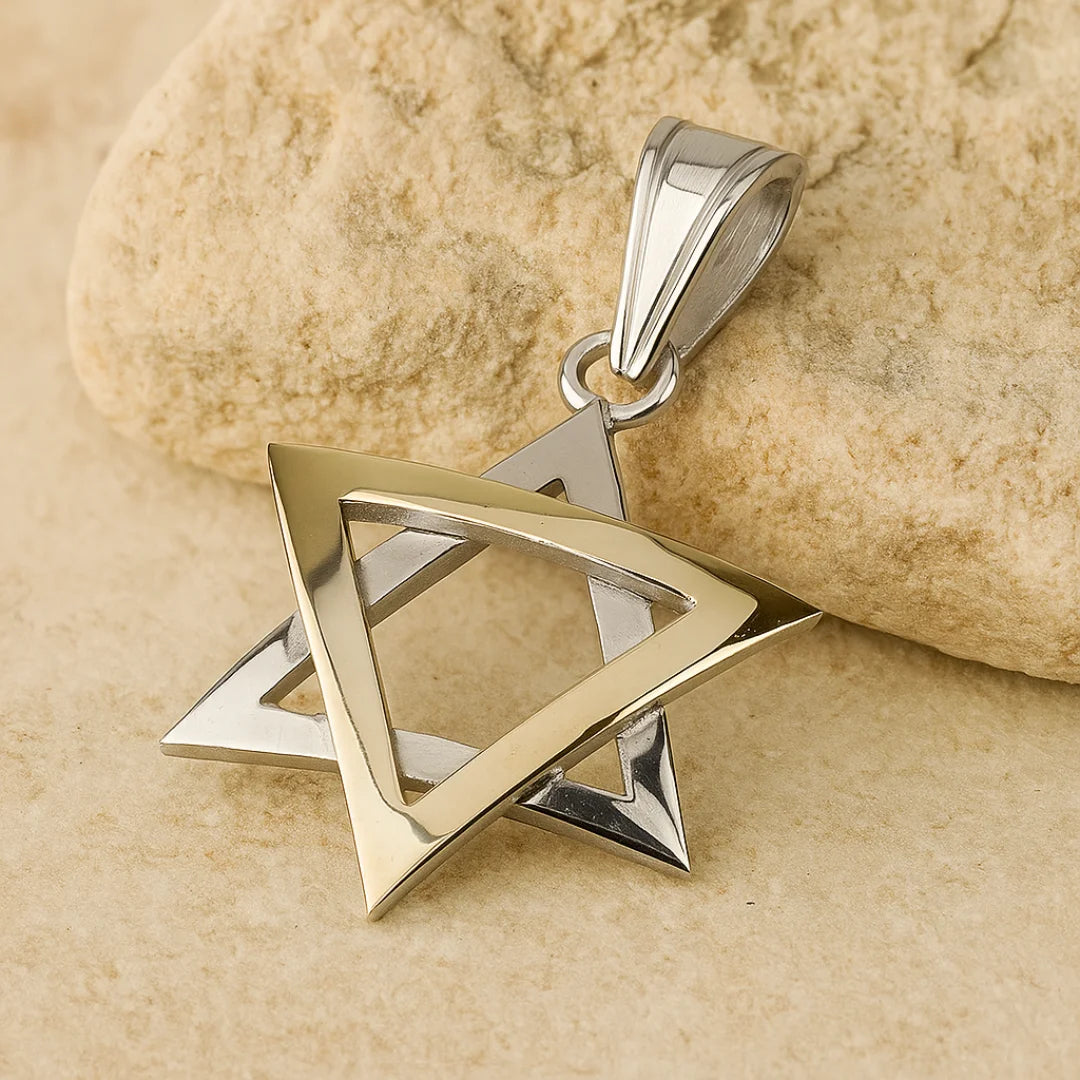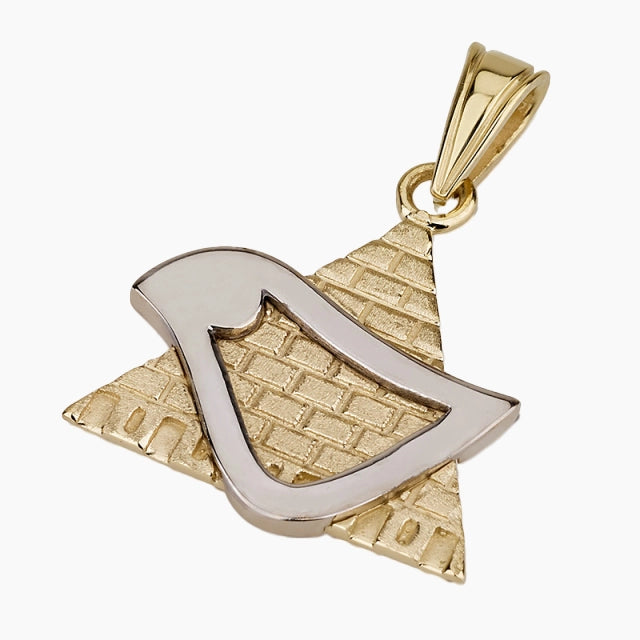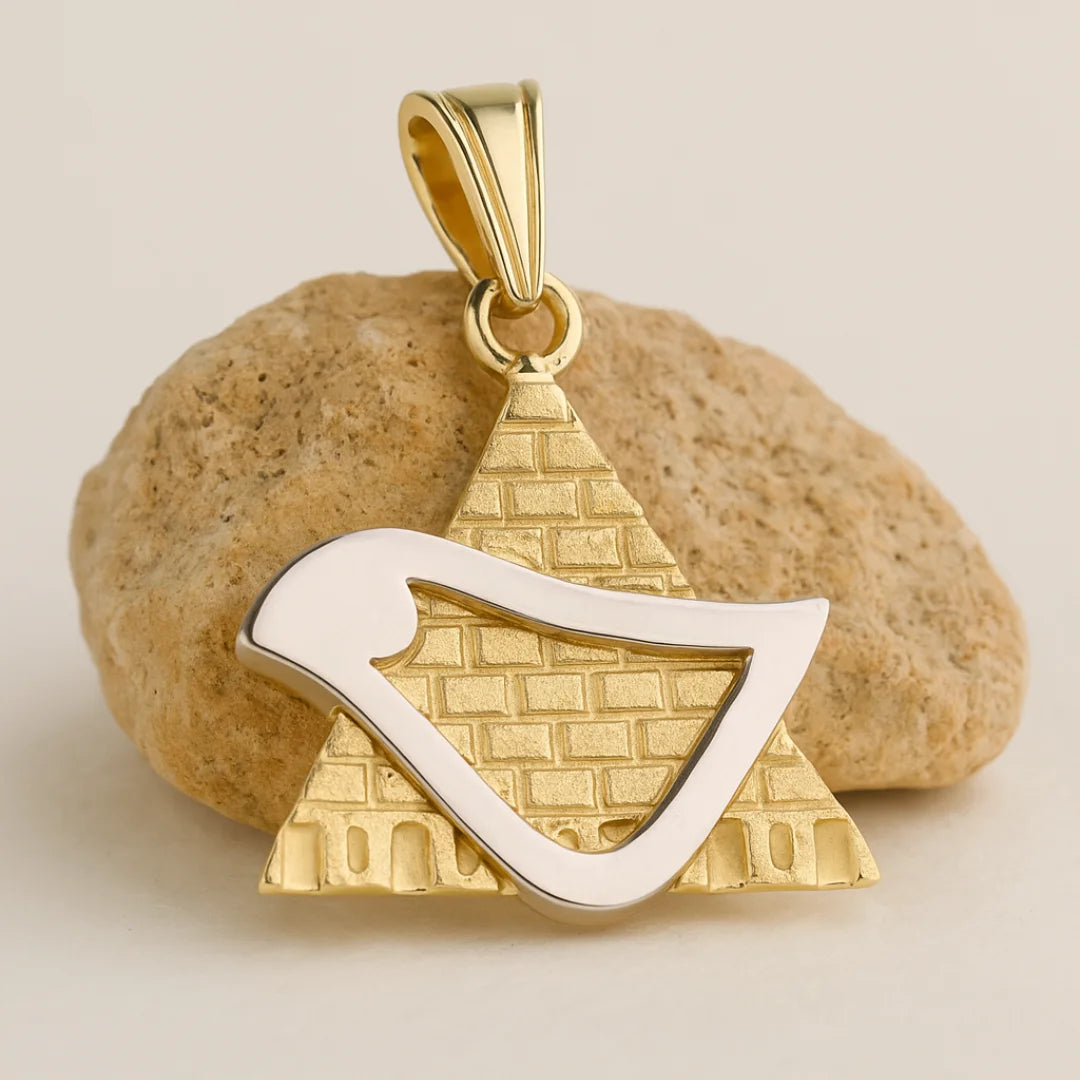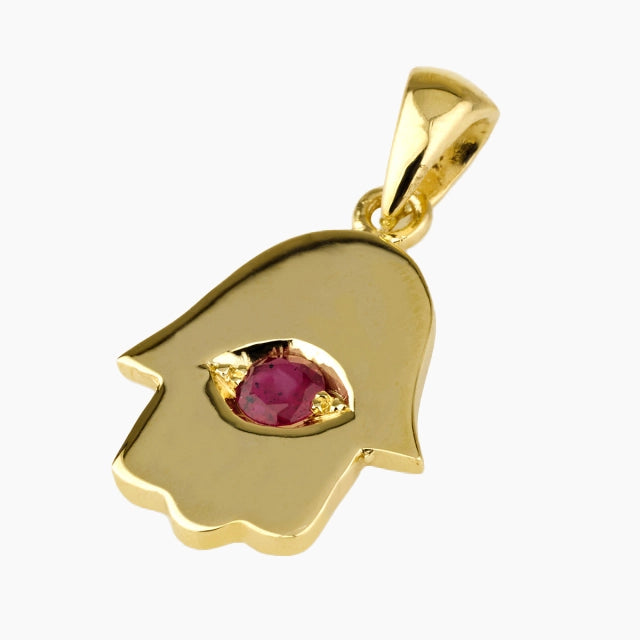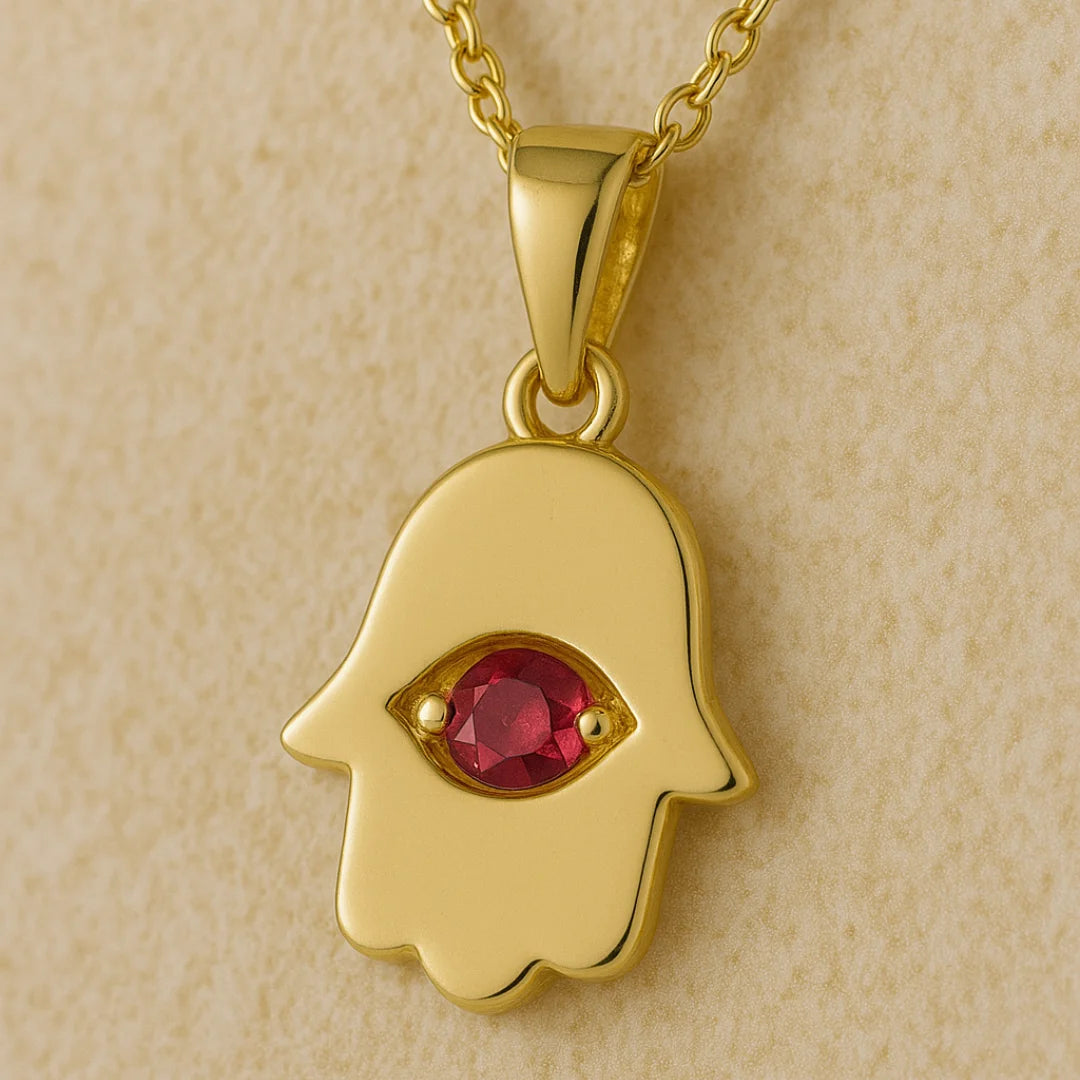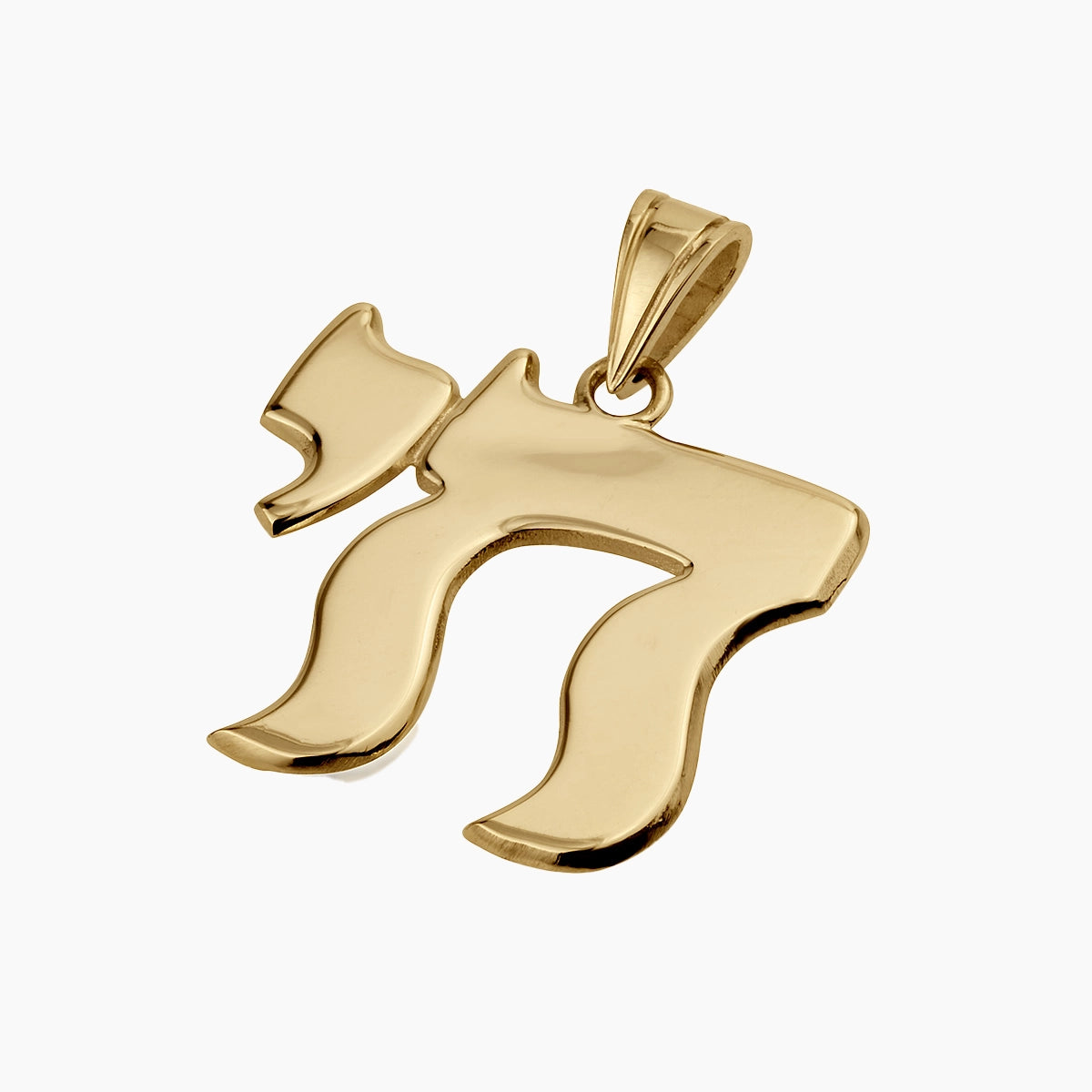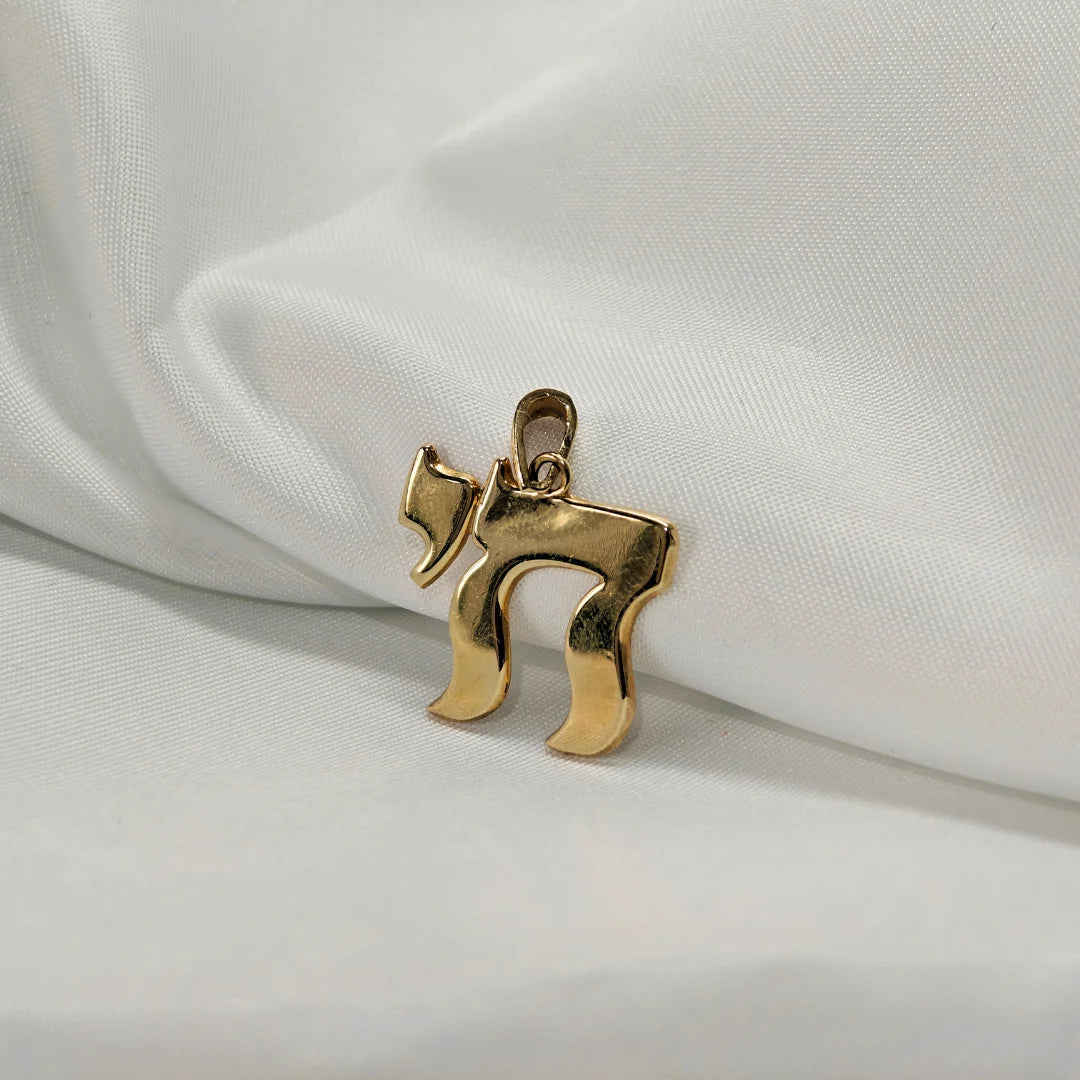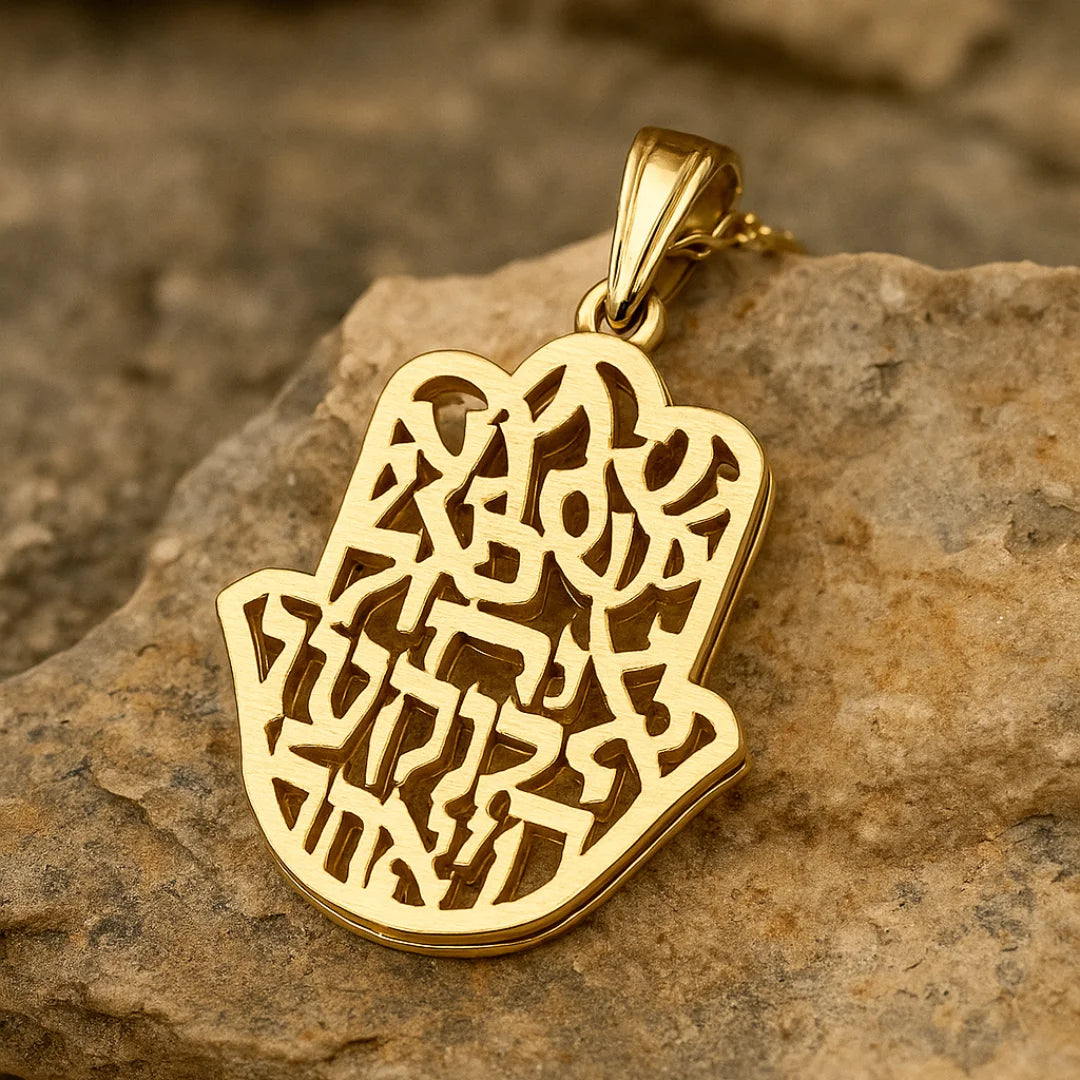

Jewish Jewelry
Jewish Jewelry: Tradition, Meaning and Timeless Design
Jewish jewelry has been integral to Jewish life from the time of the Bible, not merely for its beauty, but for its significance. From ancient history to modern-day Israel, Jewish jewelry has carried symbols of faith, identity and belonging. Each piece has a history beyond aesthetics: it tells the history, values and aspirations of a people. In Judaism, jewelry is frequently utilized as a tool to make faith convenient. Pendant shapes that mirror the Star of David, rings with Hebrew blessings inscribed upon them, or protective charm bracelets are all forms of identity. These are not ornaments, but reminders of our heritage and whence we came.
Mentions of jewelry in the Jewish Bible
Jewelry appears many times in the Bible. Abraham's servant gave Rebekah gold bracelets and a nose ring when he met her. The High Priest wore twelve valuable stones on his breastplate, representing the twelve tribes of Israel. These all indicate that jewelry was not only beautiful but also strongly symbolic, associated with religion, covenant and celebration.
Origins in Southern Israel
Jewish jewelry is not just about fashion, but about significance. It includes anything that originates from Jewish tradition, scripture, or history.
The difference between Jewish jewelry and Judaica
Judaica are ritual objects used in religion, like kiddush cups, mezuzahs, or menorahs. Jewish jewelry is adornment worn on the human body. Jewish jewelry has individual meaning, uniting spiritual symbols with daily beauty.
Some of the most recognizable Jewish symbols are:
- Star of David (Magen David): representing unity, faith and protection.
- Chai (חי): meaning "life" - a celebration of life and divine power.
- Hamsa: an evil eye amulet in the form of an outstretched hand that will protect the wearer.
- Pomegranate: representing abundance, benediction and the 613 Torah commandments. Each one has its own history and when worn as jewelry, they are small but powerful symbols of faith.
Traditional Jewish Jewelry
The oldest Jewish jewelry dates back thousands of years. It was usually plain, but rich with significance, worn for religion, protection, or to declare membership.
Ancient influences and historical motifs
In ancient times, Jewish jewelry was influenced by the neighboring countries of Egypt, Babylon and Persia. Despite this, Jewish artists placed unique significance on their designs, using Hebrew lettering, biblical imagery and symbolism taken from the Temple and Israel. Holy decoration soon became standard practice. A pendant that had previously been used as an amulet was now being worn as jewelry; a ring that had previously borne prayers would now be worn as a wedding ring. This blend of spiritual and personal use is what makes Jewish jewelry forever gorgeous and emotionally profound.
Handmade and Unique Jewish Jewelry
Jewish jewelry has never been missing a personal touch. A lot of the jewelry is handmade, crafted by artists who are preserving old traditions and adding their own touches and symbolism to them. Handmade Jewish jewelry tends to carry the care and consideration of the artist. Each line, engraving, and setting is intentional, even including Hebrew letters, prayers, or symbols that have spiritual meanings. Israeli craftsmen are inclined to adopt Jerusalem stone-inspired patterns, desert landscape, or ancient archaeological symbols, for example.
In a time of mass manufacturing, handcrafted Jewish jewelry stands out because it contains soul. Each item is one-of-a-kind, a testament that religious and ethnic identity is personal. Be it a hand-carved ring, hammered pendant, or Jerusalem workshop-produced gold hamsa, the handmade element brings the wearer and maker together in common heritage.
Gold and Materials in Jewish Jewelry
The Jewish jewelry uses more than just ornamentation material, since oftentimes the symbols do signify something in terms of tradition and worth. Gold has been revered as holy and lovely in Judaism for many centuries. The Bible mentions gold used in the building of the Tabernacle and the holy items of the Temple. Because of this symbolism, gold jewelry, especially when it's engraved with Hebrew writings or symbolism, is regarded as both beautiful and spiritually valuable.
Silver, gemstones and modern materials
Silver also appears prominently in Jewish jewelry and Judaica, representing humility and purity. Gems such as garnet, onyx, turquoise and amethyst often represent the High Priest stones. In new designs, new materials such as glass, enamel and even volcanic stone are being utilized, bringing old symbolism and new craftsmanship.
Jewish Pendants and Necklaces
Necklaces and pendants are among the most popular forms of Jewish jewelry and are often put on a daily basis as symbols of protection and faith.
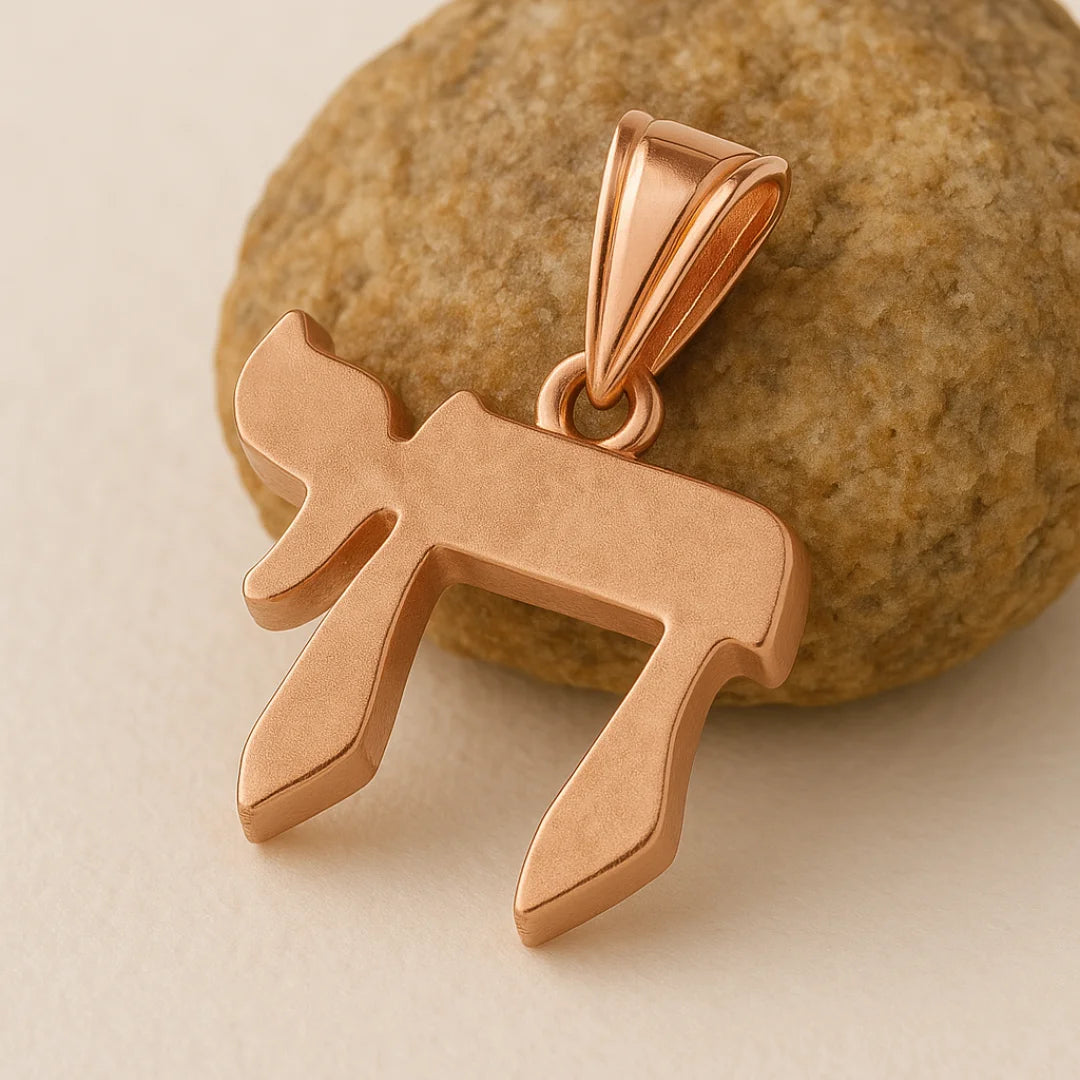
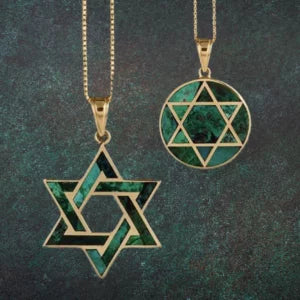
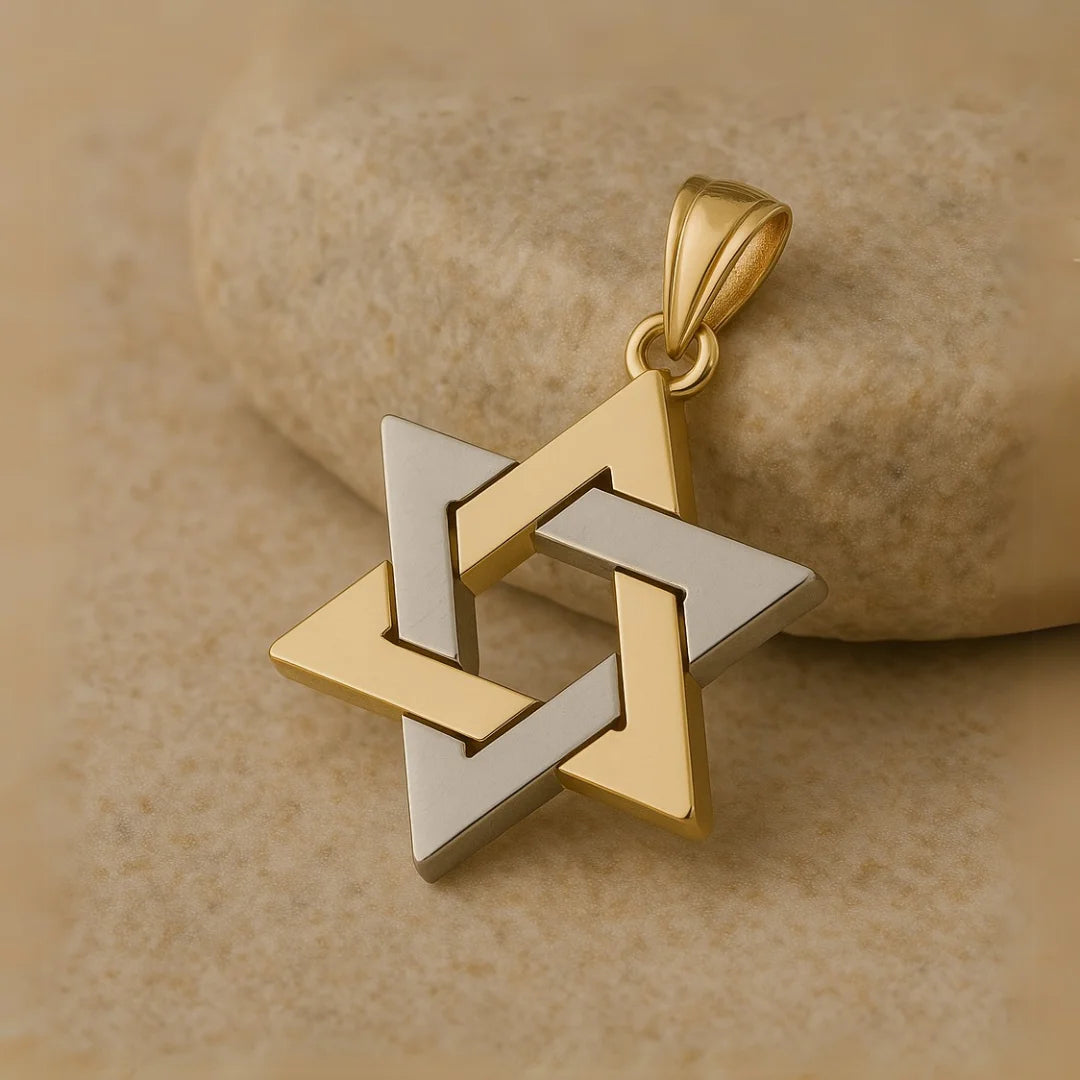
Popular symbols: Star of David, Chai and Hamsa
The Star of David remains the most well-known emblem of Judaism, representing the unity of God and a link between heaven and earth. Chai, an emblem of "life," is typically worn as an encouragement to make the most of life and be grateful for it. The Hamsa, which looks like a hand, is reportedly a sign of protection from God and is used both by Jews and those of other cultures who believe in its message of peace and safety.
Whereas pendants in the past are intricate and elaborate, modern Jewish jewelry is minimalist in nature. Gold outlining in the plain shape of a Star of David or a Hebrew word inscribed has gone fashionable for its understated elegance. These new pieces affirm the way that Jewish design transforms yet remains meaningful.
Jewish Rings and Bracelets
Bracelets and rings have played an important role in Jewish culture, often used to memorialize something or as a reminder of their faith.
Rings with Hebrew inscriptions and blessings
Some Jewish rings have important Hebrew words or phrases, such as Ani L'dodi V'dodi Li ("I am my beloved's and my beloved is mine") of Song of Songs. Some have prayers like Shema Yisrael or symbols like the Star of David. These rings are often given as wedding rings or presents to represent love, devotion and religious unity.
Red bracelets and Kabbalah traditions
Red string bracelets, usually worn around the wrist, borrow from Kabbalistic tradition. They are thought to repel the "evil eye" and protect and bless the wearer. Simple though they are, they're now one of the most identifiable pieces of Jewish jewelry today, symbolizing religion in simple yet forceful terms.
Men’s Jewish Jewelry
Jewish jewelry has been worn by men and women throughout history but in varying styles and meanings. Jewish jewelry for men focuses on strength and heritage and religion. Men's most popular items are usually heavy silver chains with Star of David pendants, signet rings with Hebrew letters and leather cuffs with verse or blessings. Mezuzah pendants and simple gold items are also favored by a number of men for their subtle showing of identity and beliefs.
Women’s Jewish Jewelry
Women's Jewish jewelry tends to blend beauty and spirituality. Chai pendants, hamsa earrings, gemstone pomegranate patterns and exquisite gold necklaces are all extremely popular. The styles are light and delicate or rich and evocative, traditional or modern, but no matter, they are all infused with the same enduring sense of connection and meaning. Jewelry is both a personal statement and a daily reminder of faith, family and heritage for many women.
Jewish Jewelry in Modern Times
While drawing on ancient tradition, Jewish jewelry continues to change and stay in vogue, adapting to new trends and new generations. Modern Jewish jewelry often combines ancient symbols with simple, modern lines. Geometric Star of David and Hebrew lettering are found on simple gold necklaces in both mass and high-end market lines. Young designers attempt to bring Jewish symbolism into the current times by making pieces that have a spiritual aura yet are modern.
The rise of Israeli designers and innovation
Israel is today a global hub for Jewish jewelry design. Artists combine ancient traditions with new processes, combining gold, silver, Roman glass and indigenous natural stones. From Tel Aviv workshops to Jerusalem studios, they are transforming the look and feel of Jewish jewelry while retaining its message of beauty and religious faith.
Jewish Jewelry for Special Occasions
For weddings, pendants or rings with Hebrew lettering or pendants with the word Ahava ("love") are very symbolic. Jewelry on bar and bat mitzvahs marks the transition into Jewish adulthood, a gold Star of David, a Chai necklace, or a name necklace. On Jewish holidays such as Hanukkah or Passover, presenting jewelry with traditional patterns has become a sign of connection and exuberance.
How Jewish jewelry celebrates life’s milestones
Beyond holidays and ritual, Jewish jewelry is bestowed to commemorate births, anniversaries and achievement. With every symbol blessed and meaningful, it makes each present greater than special, a keepsake which is historic as well as heart-filled.
Featured collection
Featured
14K Gold Israel Map Pendant
14K Gold Hamsa Pendant with Opal
Handmade 14k Solid Gold & Opal Evil Eye Ring
14K white and yellow Gold Star of David Pendant
14K Gold Star of David Pendant With White Gold Dove
14K Gold Chai Pendant
14K Solid Gold Key Pendant with Shema Israel Prayer
14K Gold Hamsa Pendant with Ruby
Blessed 14K Gold Chai Pendant
14K Rose Gold Rugged Chai Pendant
Frequently Asked Questions
Jewish artisans have a long history of design, trade, and craftsmanship. Jewelry emerged as a cherished art form in Jewish culture across centuries, merging religion, tradition with imagination.
Jewish jewelry represents faith and identity. Some Jewish jewelry contains symbols like the Star of David, Chai, or Hamsa, representing protection, faith, life, and blessing.
Many of the Jewish symbols and Hebrew writings find their way into necklaces and rings. Bestsellers include Stars of David, Chai necklaces, Hamsa bracelets, and mezuzah pendants.
The red string bracelet is rooted in Kabbalistic tradition. The bracelet is believed to repel the "evil eye" - an undesirable energy form - and to bestow good luck, peace and power.
Jewish jewelry is traditionally done in silver or gold, sometimes with gemstones like garnet, turquoise, or onyx. Imitation Roman glass, enamel and Israeli natural stones are also utilized in modern designs.




